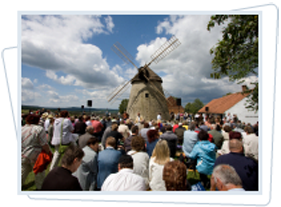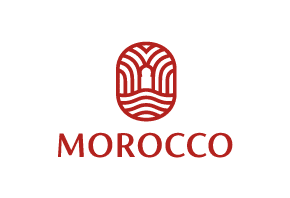European tourism Gardens of Eden no 25: Destinations get vibrant new lives

Regenerated destinations: new life new tourism new tourists: Czech Republic: Cyprus: Croatia: Belgium: Austria
Slovácko
The authentic region of Slovácko is situated in the south east of the Czech Republic, bordering Slovakia and Austria. The geographical location and impressive historical heritage make this region a truly fascinating destination. The mild climate, mountains, lush forests and rivers give Slovacko its unique ambience. The vast culture and tradition of the region is visible in the everyday lives of the locals. For example, the old buildings with their white-washed walls and colourful flower ornaments around the windows have been well preserved.
There is also a wide variety of gourmet specialities on offer, using traditional recipes that have been passed on from one generation to the next. The combination of cultural, historical and natural sites will ensure a great stay for everyone who comes here.

Kalopanayiotis (Cyprus)
The small village of Kalopanayiotis is situated in the Marathasa region, on the northern slopes of the Troodos Mountain Range, 700 meters above sea level. This beautiful village offers traditional architecture, thermal springs and luscious green valleys. The tiled rooftops, stunning balconies, quiet courtyards, cobblestone paths and ancient churches all contribute to the elegant setting. Kalopanayiotis is also famous for its thermal springs.
The healing properties of these springs were famous in antiquity, when the Romans, Byzantines and Franks used to visit the village. The Setrachos River, along with numerous water-mills and natural springs provide a tranquil and peaceful atmosphere.
In recent years, the local authorities with the support of the Government and the European Union have initiated several regeneration projects in order to revive the village. For the authorities perceiving its rich architectural and cultural identity was a core aspect of the programme, and this is reflected in all the initiatives executed.
For example an old school next to the Monastery of Agios Ioannis Lampadistis has been renovated and transformed into a museum. It now hosts an impressive collection of Byzantine art, ecclesiastical artefacts and antiques. The house of National Martyr Lavrentios is another example of sustainable regeneration at its best. This glorious building has been restored and converted into a cultural and conference centre for the community. Also a number of houses have been renovated into agri-tourism accommodation. For the local authorities, it was also important that the village regained its reputation as a great therapeutic center with healing springs. Today, the ancient spa village of Kalopanayiotis is a regenerated destination, ready to welcome guests from Cyprus and beyond. It is a place that combines sightseeing, nature, health and tradition, in a truly beautiful way.

Pustara Višnjica (Croatia)
Pustara Višnjica Višnjica is an estate situated in the east of Croatia. It is surrounded by beautiful lime and chestnut tree gardens and old pine and maple trees. The beauty and tranquillity of this place is mesmerising. Pustara Višnjica is located in the Slavonia region in VirovitiÄko-Podravska County, just 13 km from Slatina. The word Pustara comes from an old Hungarian word ‘puszta’, which meant ‘land used for raising cattle and breeding horses’.
This type of land was once a common feature across the Croatian landscape, but after many years of neglect, Pustara Višnjica is now the only working Pustara in the country. The fascinating landscape, mild climate, fresh air and clear water, as well as the culture and history of this place have had a great influence on regeneration of the region. Today, Višnjica offers something for everyone. It’s the perfect destination for those looking for peace and quiet as well as those looking for adventure. Horseback-riding, cycling, hiking and swimming are just some of the activities on offer.
The regeneration of Pustara Višnjica is based on the idea of returning back to nature and revitalising the values of a healthy lifestyle through tourism. Connecting agriculture and traditional local activities to sustainable tourism, was a new proposition and one of the key challenges. Today, there are numerous regeneration programmes in Pustara Višnjica, including: the development of rural tourism, horse breeding, and the cultivation of sweet potato, grains and medicinal herbs. The 19th Century buildings have been restored and given a new purpose; the old residential buildings are now workshop studios. Here you can learn the art of cooking and traditional jewellery or pottery making. The old stables have been restored and over 70 horses, of various breeds, now thrive on the land. The development also now includes riding and cycling paths, ideal for discovering the beauty of the region and its surroundings

Marche-en-Famenne (Belgium)
Marche-en-Famenne Marche-en-Famenne is situated in the Wallonian region, between the valleys of the Lesse and Ourthe rivers. This regenerated town, in close proximity to Brussels, Maastricht and Liege is today a thriving economic zone. The municipality consists of the town of Marche along with 12 surrounding villages. Combining rural traditions with a vibrant urban feel, the destination offers a unique blend of the old and new.
The town of Marche is known for its stunning architecture, museums and historical churches. Strolling through the old town is an absolute must and a perfect way to discover more about the region’s history.
In the middle of three different natural regions (Famenne, Ardenne and Condroz), the area also offers ample opportunities to get away from city life. Cycling and hiking are just two of the many options for those seeking an active holiday.
Regeneration and maintenance of urban and rural sites in Marche-en-Famenne has been a major priority for the local authorities. Ten of the municipality’s most prominent landmarks have now been restored, including many architectural monuments which had suffered severe damage. The Juniesse Tower, the only remaining section of the medieval fortress of the city, is now a lutherie school and museum, and the medieval castle of Jemeppe in the village of Hargimont is now a venue for seminars and conferences.
Several historical buildings like the former church and college of the Jesuits, the Old Granary House or the Dochain House were converted into hotels or restaurants, offering remarkable hospitality to the thousands that visit the town. These are just a few examples of how the local authorities are breathing new life into old sites, and through a carefully monitored restoration and redevelopment programme, are ensuring the survival of the town’s rich cultural history.

City of Gmünd / Carinthia (Austria)
The small medieval town of Gmund is hidden in southern Austria, on the edge of Hohe Tauern and Nockberge national parks. Its prime location between three hiking and skiing resorts ensures that there is something for everyone to explore. A rich cultural programme all year round allows visitors to experience the diverse heritage of the town and its surrounding area. You can attend concerts, theatre productions, watch dance shows, visit several exhibitions and meet some of the resident artists during their workshops. The whole town celebrates art, and therefore is rightfully known as the artists’ city.
For the local authorities and residents, the protection and upkeep of the old town, its architectural and cultural heritage has always been very important. The city has witnessed large-scale renovation projects aimed at preserving its flair and ambience, while also protecting its historic structures in an innovative way. The historical buildings have been carefully renovated and repainted. For the last 20 years, Gmund has consistently focused on art and culture – and today the city is a fine example of how a strong cultural commitment can enable the development of a city.
Over the same period, 15 abandoned historic buildings have been carefully converted into stunning public spaces, such as galleries, arts and crafts workshops, artists’ studios, sculpture gardens, all of which, add to the enchanting appearance and atmosphere of Gmund. The cultural initiative, ‘Kulturinitiative’, the city’s administration and various networks of cultural and marketing organisations have worked collaboratively to strengthen the local economy and improve the quality of life for inhabitants and visitors.
SEE ALSO:
- NO 23 http://www.travelmole.com/stories/1149958.php
- NO 22 http://www.travelmole.com/stories/1149858.php
- NO 21 http://www.travelmole.com/stories/1149759.php
- NO 20 http://www.travelmole.com/stories/1149555.php
- NO 19 http://www.travelmole.com/stories/1149447.php
- NO18 http://www.travelmole.com/stories/1149364.php
- NO 17http://www.travelmole.com/stories/1149256.php
- NO 16 http://www.travelmole.com/stories/1149168.php
- 
NO 15http://www.travelmole.com/stories/1148989.php

- NO 14http://www.travelmole.com/stories/1148859.php

- NO 13 http://www.travelmole.com/stories/1148786.php

- NO 12 http://www.travelmole.com/stories/1148671.php

- NO 11http://www.travelmole.com/stories/1148546.php

- NO 10 http://www.travelmole.com/stories/1148482.php

- NO 9http://www.travelmole.com/stories/1148389.php
- 
N0 8 http://www.travelmole.com/stories/1148290.php
- 
NO 7http://www.travelmole.com/stories/1148189.php

- NO 6http://www.travelmole.com/stories/1147978.php

- NO 5 http://www.travelmole.com/stories/1147875.php

- NO 4 http://www.travelmole.com/stories/1147779.php

- NO 3http://www.travelmole.com/stories/1147673.php
- 
NO 2 http://www.travelmole.com/stories/1147583.php
- 
NO 1http://www.travelmole.com/stories/1147467.php

Valere Tjolle
Valere is editor of the Sustainable Tourism Report Suite 2011 Get your copy at a special offer price: HERE
 United Kingdom
United Kingdom United States
United States Asia Pacific
Asia Pacific












































Dozens fall ill in P&O Cruises ship outbreak
Turkish Airlines flight in emergency landing after pilot dies
Boy falls to death on cruise ship
Unexpected wave rocks cruise ship
Woman dies after going overboard in English Channel